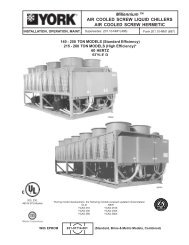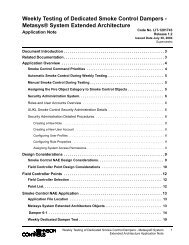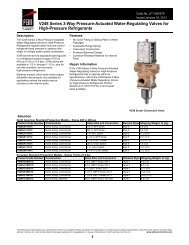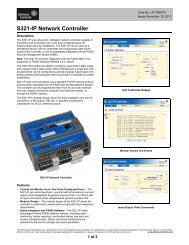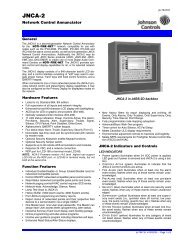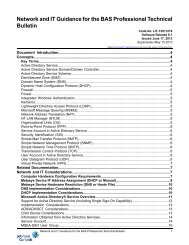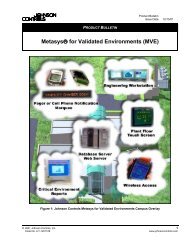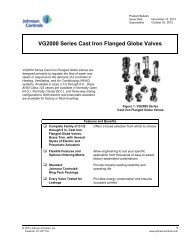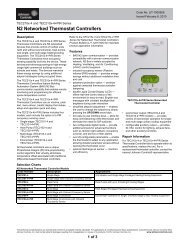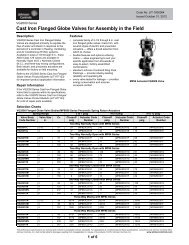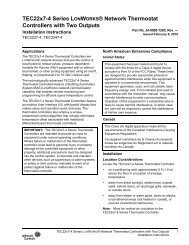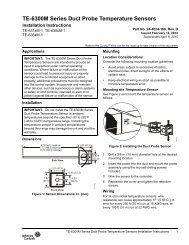TEC Zoning Control System for Stand-Alone and BACnet® MS/TP ...
TEC Zoning Control System for Stand-Alone and BACnet® MS/TP ...
TEC Zoning Control System for Stand-Alone and BACnet® MS/TP ...
- No tags were found...
You also want an ePaper? Increase the reach of your titles
YUMPU automatically turns print PDFs into web optimized ePapers that Google loves.
In colder climates, VAV system heating operation without terminal reheat typicallyresults in colder walls on the outer perimeter of the zone. Although the dry bulbtemperature of the zone is well maintained, occupants may be uncom<strong>for</strong>tablesimply because of the lower outer wall temperature. In addition, heating deliveryfrom the ceiling in outside zones is not as efficient as heating delivery directlywhere the losses occur, such as when a perimeter electric baseboard or a perimeterhydronic baseboard is used.In regions where the heating load is low <strong>and</strong> only required <strong>for</strong> a short period of theyear, a properly sized VAV system can deliver the required heating com<strong>for</strong>twithout the use of terminal reheat. Ideally, the design of the ductwork <strong>and</strong> areadiffusers should be the most efficient arrangement possible, with the heatingdelivery concentrated close to the outer walls of the zone.In problematic situations where efficient heating delivery is an issue, fan poweredVAV systems can reduce occupancy discom<strong>for</strong>t by providing a constant flow to thezones, to maximize heating delivery.Exception AreasAn office installation typically requires that a single VAV system service multipleareas or zones. These areas are likely a mix of internal <strong>and</strong> external zones. Verifythe requirements of each zone to determine a true total peak load be<strong>for</strong>ecommitting to a final VAV system design <strong>and</strong> size.It may be necessary to intentionally oversize or undersize the VAV system to meetthe daily load dem<strong>and</strong>s. The following are examples where oversizing may berequired:• areas with large windows that are exposed to the sun <strong>for</strong> long periods of time• conference rooms• cafeterias• areas with vending machines• areas with extra lighting• areas with computers, photocopiers, <strong>and</strong> other electronic office equipmentAreas such as computer rooms, kitchens, or large meeting rooms may require anindependent VAV system, <strong>and</strong> should not be included with other zones that arenetworked to the rooftop controller. Certain critical areas may call <strong>for</strong> cooling allyear long <strong>and</strong>, based on the VAV system settings, could provide proper occupancycom<strong>for</strong>t <strong>for</strong> only a portion of the year. Knowing in advance the critical areas of thebuilding, <strong>and</strong> designing <strong>for</strong> these zones appropriately, results in a morecom<strong>for</strong>table environment <strong>for</strong> all building occupants.10<strong>TEC</strong> <strong>Zoning</strong> <strong>Control</strong> <strong>System</strong> <strong>for</strong> <strong>St<strong>and</strong></strong>-<strong>Alone</strong> <strong>and</strong> <strong>BACnet®</strong> <strong>MS</strong>/<strong>TP</strong> Networked ApplicationsTechnical Bulletin



